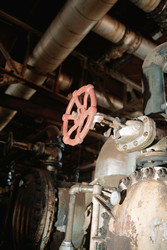Using nanoparticles to better protect industrial applications
An innovative high temperature multi-purpose coating – designed to protect industrial components against heat and oxidation – is currently being trialled on various applications. The coating, which has the potential to benefit numerous industrial sectors, is the result of pioneering work carried out by the EU-funded PARTICOAT project. High-temperature coatings are widely used in the power generation and aerospace industries as well as in engines and exhaust systems. They are also increasingly required for construction and in many electronic applications. The EU-funded PARTICOAT project, which was formally completed in 2012, demonstrated the potential advantages of using nanoparticles to develop an innovative high-temperature coating system. Scientists from the Fraunhofer Institute in Germany, which coordinated the original PARICOAT project, are now looking at ways to commercialise their findings. The EU-funded project, which began in 2008, successfully developed micro-scaled spherical aluminium particles that can be deposited by spraying, brushing or gel application. At a certain temperature, these particles then bond to each other and to the surface of an alloy, forming hollow aluminium oxide spheres. These hollow spheres are filled with gas, which is highly efficient in terms of heat insulation, as gases don’t conduct heat as well as solids do. Simultaneously, a layer is formed below the topcoat, which acts as a corrosion protection layer. The specific microscopic structure of the coating can be changed through altering the particle size or treating at a specific temperature, making the innovation attractive to a range of possible applications. The scientists behind the development have since been working on ways of economically manufacturing this insulating coating, which is just a few micrometres thick. The process has been refined to the extent that coating layers can be produced in the required thickness. Aluminium particles are mixed with a viscous liquid bonding agent, which produces a substance similar to a paint or slurry. This can then be applied to a metallic component. Lab and field tests have demonstrated that the coating is not only highly effective, but also offers cost reductions when compared to other state-of-the-art coatings. PARTICOAT coatings also provide improved flame resistance, which is of particular interest for the insulation of electrical conductors and in the construction of buildings. The project received EUR 4.8 million in EU funding and is a good example of effective EU investment in nanotechnology, which involves the fine-tuning of materials at the atomic, molecular and macromolecular scales. As demonstrated by the project, nanotechnology offers great potential in the development of new products, helping to boost industry and achieve sustainable growth. This is why the EU is investing a great deal of money in research and development, in order to ensure that the right conditions for realising nanotechnology’s full potential are established. For further information, please visit: PARTICOAT http://www.particoat.eu/
Countries
Germany



